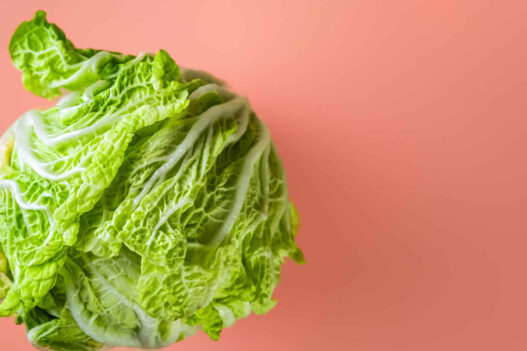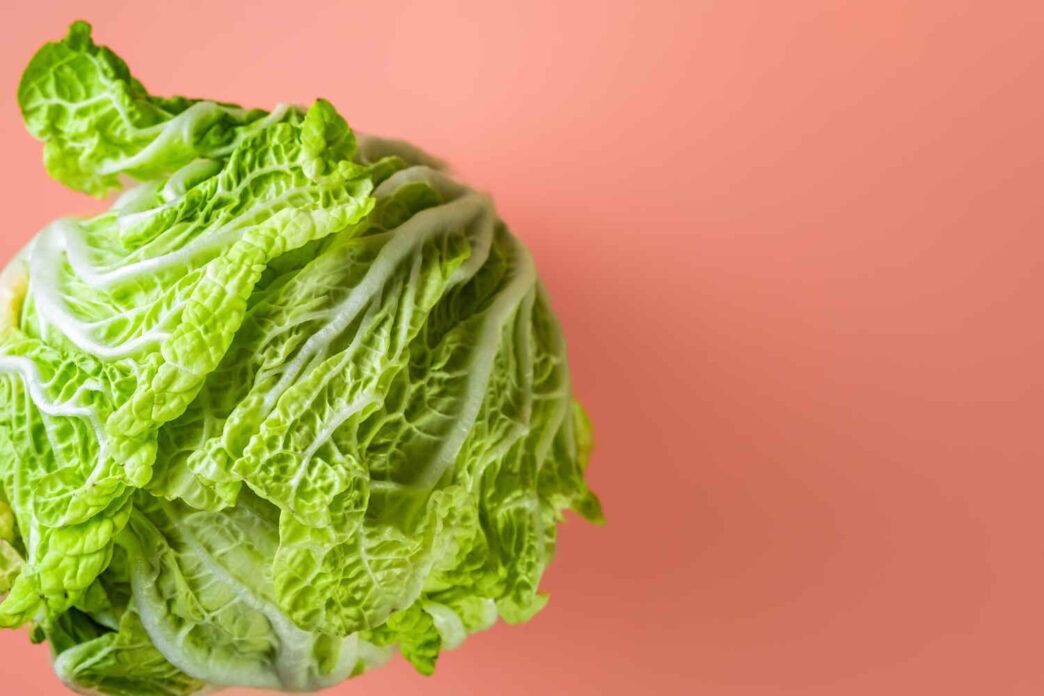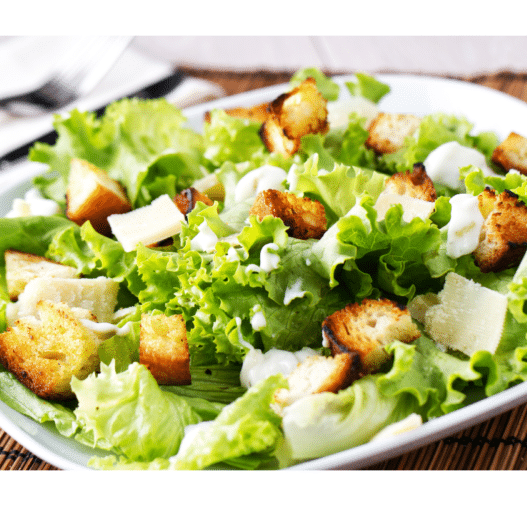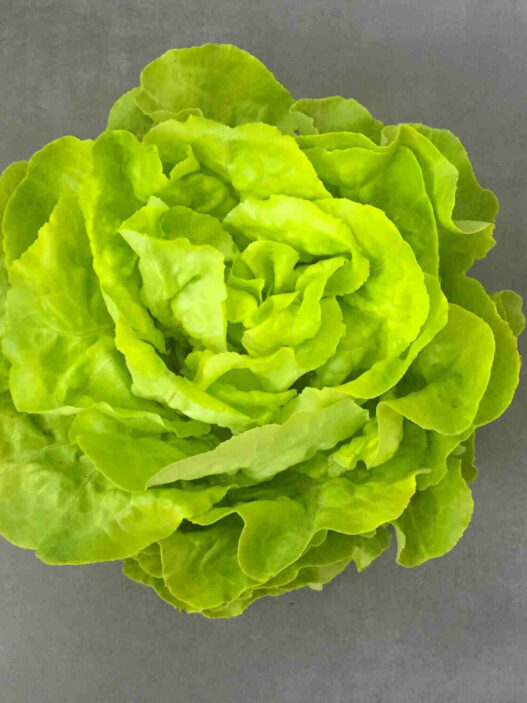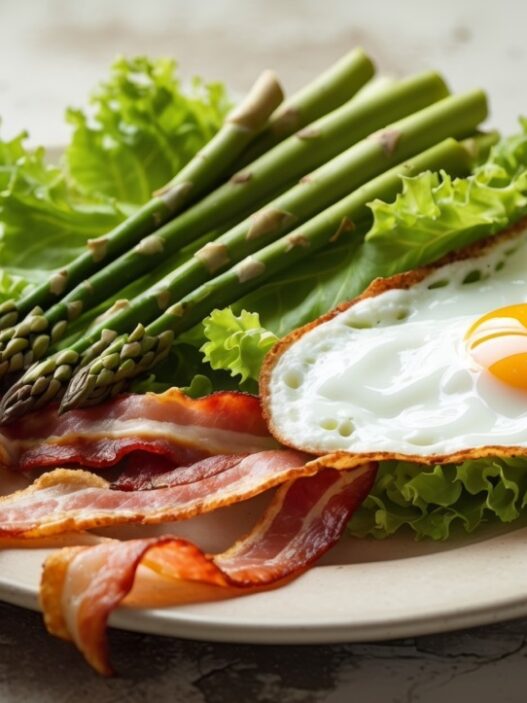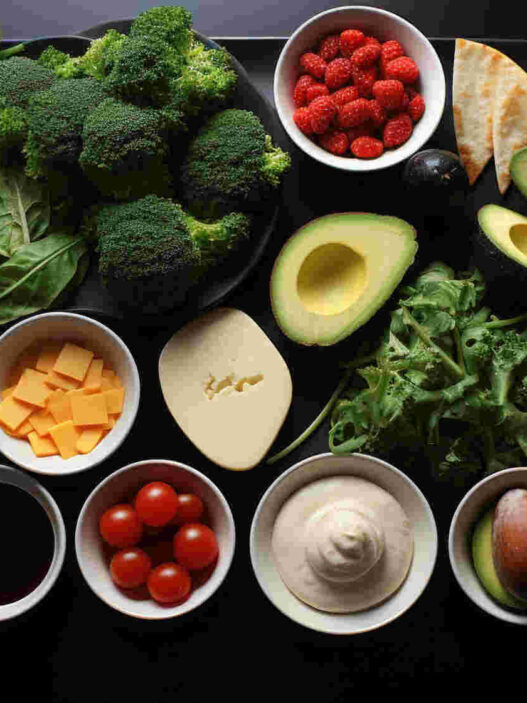Crisphead lettuce, also known as iceberg lettuce, is a type of lettuce belonging to the Lactuca sativa var. capitata family and that is characterized by its crisp, crunchy texture and mild flavor. It was given the name ‘iceberg’ way back in the 1900s when it was shipped in ice-filled containers. It is often used in salads, sandwiches, and as a garnish. Iceberg lettuce is low in calories and high in water content, making it a refreshing addition to meals. Nutrition-wise, crisphead or iceberg lettuce is relatively low in vitamins and minerals compared to other types of lettuce; it has low nutritional value but still can be consumed as a part of a balanced diet (1, 2). Check out below the characteristic features, calories, crisphead lettuce varieties, and nutrition facts for this crunchy and tasty salad.
Crisphead lettuce – Characteristic Features
Shape & Texture
These are tight and dense heads of spherical leaves that fold each other. Thick and crisp leaves with a crunchy texture. It is crunchy and watery.
Color
Crisphead lettuce is light green to dark green-colored leaves and most are mid-green
Taste
Crisphead lettuce has a milder flavor. It is crunchy and delicious (2).
Nutrition facts for Iceberg or Crisphead Lettuce
Some of the bioactive constituents of crisphead or iceberg lettuce include (1):
Phenolic acid derivatives, Coumarin derivatives, Flavonoids (Quercetin glycosides, Kaempferol glycosides), Flavones (Luteolin), and Anthocyanins (Cyanidin)
Carotenoid (Lutein, beta carotene)
The carotenoid content of crisphead lettuce was found to be lower than in other lettuce varieties such as butterhead lettuce.
Sesquiterpene lactones (Lactucin, Lactucopicrin)
Lettuce is the main dietary source of sesquiterpene lactones which has been linked to the degree of bitterness.
Folate (Vitamin B9)
Crisphead lettuce has folate (vitamin B9) but lesser than the looseleaf variety but better than the butterhead lettuce.
Ascorbic acid (Vitamin C)
Crisphead lettuce contains vitamin C but it is lower than looseleaf and butterhead varieties.
Tocopherol (Vitamin E)
A relatively low amount of vitamin E is found in crisphead lettuce compared to other varieties.
Vitamin K
Crisphead lettuce has the lowest dietary phylloquinone as compared to looseleaf, romaine, and butterhead varieties. Vitamin K helps with the clotting of blood.
Thus, the iceberg variety is a poor source of the above phytochemical content as compared to other lettuce varieties (2) but due to its crunchy appearance, it is still preferred in salads, burgers, and sandwiches.
Calories in Iceberg Lettuce
One advantage of having crisphead or Iceberg lettuce is that it is one of the foods with the lowest calories (1 calorie per leaf or 10 calories per cup). So, iceberg lettuce salad, though relatively low in nutrition, has the least calories.
Crisphead Lettuce Varieties
The common varieties of iceberg or crisphead lettuce grown in the USA are –
- Crispino
- Great Lake
- Keeper
- Ithaca
- Maverick
- Raider.
Iceberg lettuce is green and the only lettuce variety which is not available in red.
Crisphead Lettuce Outbreaks & Susceptibility to Pathogens
Crisphead lettuce has several concerns due to its susceptibility to pathogens (3). Several outbreaks have been associated with iceberg lettuce resulting in illnesses mainly involving E. coli but also other pathogens (3).
Recently, it was reported that post-washing storage of sliced crisphead lettuce enhanced the risk of Enterobacteriaceae (a large family of gram-negative bacteria) even when stored at very low temperatures (4).
Crisphead Lettuce Availability, Storage, Washing
It has been recommended not to wash crisphead or iceberg lettuce if it is prewashed or to wash it just prior to preparing it. Store in refrigerator asap. Keep it separate from raw meat to avoid cross-contamination (3).
Conclusion
Though iceberg or crisphead lettuce is low in nutrition compared to other lettuce varieties, it is still used and preferred due to its crunchy texture. Further, one has to keep in mind the reports on its susceptibility to pathogens, and hence fresh lettuce must be consumed. Despite the above, the crunchy texture makes it an attractive addition to salads, buns, sandwiches, etc.
Sources
